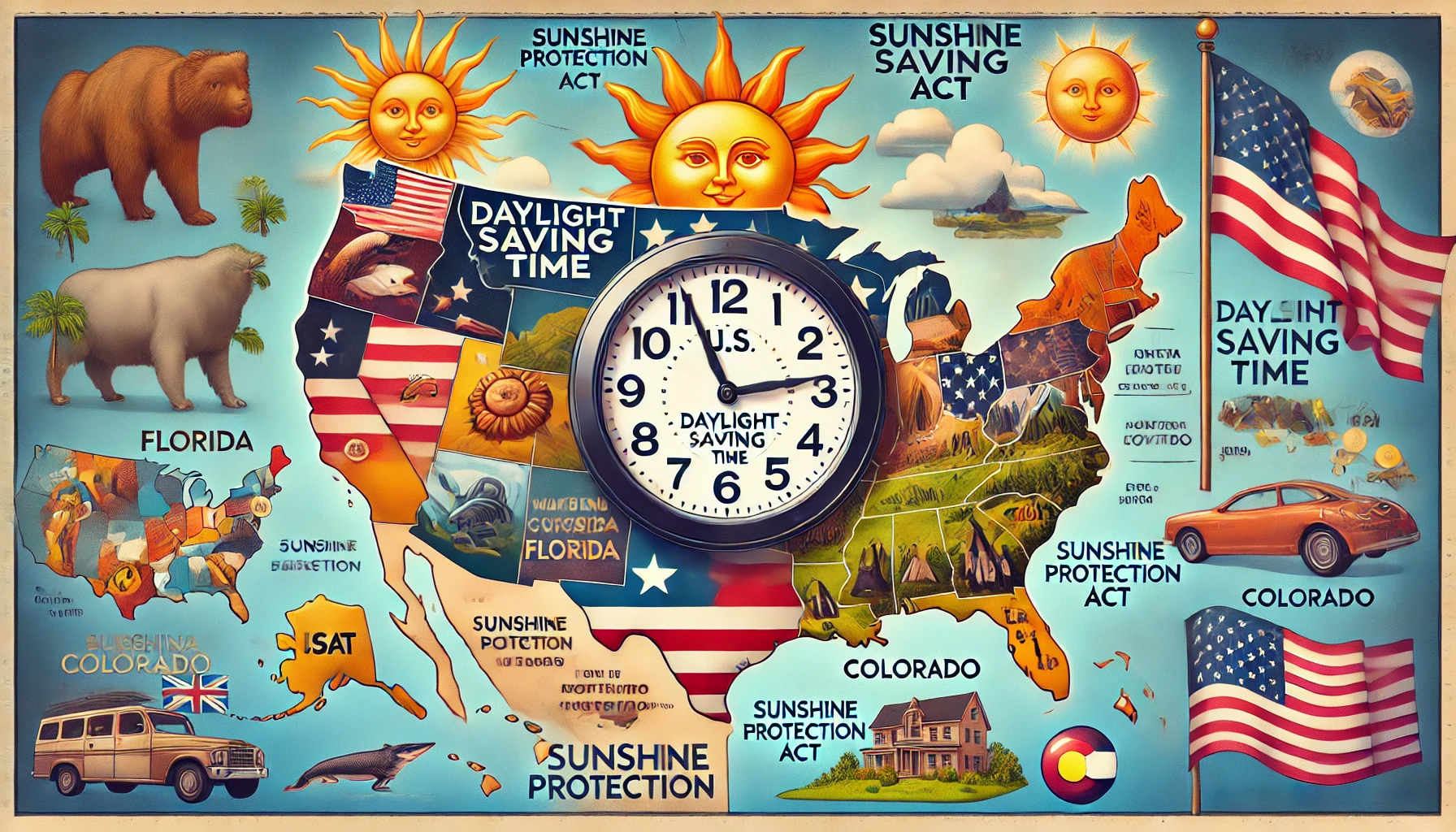
Daylight Saving Time in 2024: An In-Depth Look at the Ongoing Debate
Created on 5 September, 2024 • News • 4,070 views • 4 minutes read
As we approach 2024, discussions about the efficacy and relevance of DST have gained momentum
Introduction to Daylight Saving Time (DST)
Daylight Saving Time (DST) is a practice observed in many countries where clocks are set forward by one hour during the warmer months to extend evening daylight. In the United States, DST begins on the second Sunday in March and ends on the first Sunday in November.
As we approach 2024, discussions about the efficacy and relevance of DST have gained momentum, particularly with the introduction of new legislation and the shifting preferences of various states.
The History and Purpose of DST
The concept of DST was first proposed by Benjamin Franklin in 1784 as a way to conserve candles. However, it wasn't until World War I that DST was first implemented on a wide scale as a means to save fuel by reducing the need for artificial lighting.
The United States adopted DST in 1918, and since then, it has been implemented, repealed, and reintroduced several times, particularly during periods of energy crises.
The current DST schedule in the U.S. was established by the Energy Policy Act of 2005, which extended DST by about four weeks beginning in 2007.
The primary rationale behind DST has traditionally been energy conservation, but modern studies suggest that the energy savings may be negligible. Instead, the debate has shifted towards other potential benefits and drawbacks, including impacts on health, safety, and economic activity.
The Current State of DST in the United States
As of 2024, most states in the U.S. continue to observe DST. Clocks "spring forward" by one hour in March and "fall back" in November. However, not all states participate.
Hawaii and most of Arizona have opted out of DST under the Uniform Time Act of 1966, which allows states to exempt themselves from observing DST but does not permit them to remain on DST year-round without federal approval.
The Sunshine Protection Act
The ongoing debate about the effectiveness and necessity of DST has led to legislative action. The Sunshine Protection Act is one such example, introduced to make DST permanent across the United States.
If passed, this act would eliminate the need to switch clocks twice a year, effectively making "spring forward" the new standard time year-round.
Supporters of the Sunshine Protection Act argue that permanent DST could have several benefits, including reducing the risk of heart attacks and strokes, which tend to spike after the clock changes.
Additionally, permanent DST could benefit the economy by extending daylight hours into the evening, encouraging more outdoor activities and consumer spending.
However, the act has faced opposition as well. Critics argue that permanent DST could lead to darker mornings, especially in the winter, which could pose risks for children going to school and people commuting to work.
There is also concern about the potential impact on circadian rhythms and overall sleep health, as the human body is naturally tuned to the light-dark cycle of the Earth.
States Opting Out of DST
While the Sunshine Protection Act has yet to be passed at the federal level, some states have taken matters into their own hands. According to recent reports, states like Florida, Washington, California, and Oregon have passed laws or resolutions to adopt permanent DST if and when federal law allows it.
On the other hand, some states are moving in the opposite direction. For example, Massachusetts and Maine have considered proposals to move to the Atlantic Time Zone, effectively staying on standard time year-round and not participating in DST. These states argue that their geographical location makes DST less beneficial, as they already experience early sunsets in the winter.
The Future of DST: Proposals and Opinions
The future of DST in the United States remains uncertain, with strong opinions on both sides of the debate. Proponents of DST argue that the practice saves energy, reduces crime, and promotes a healthier lifestyle by encouraging outdoor activities. They believe that the benefits of DST, such as extended daylight for evening activities, outweigh the drawbacks.
Opponents, however, point to studies suggesting that the energy savings are minimal and that the disruptions caused by the time change can negatively impact health, productivity, and safety.
The American Academy of Sleep Medicine, for instance, has called for the abolition of DST, citing the adverse effects on sleep and overall health.
Several proposals are currently being considered at both the state and federal levels. In addition to the Sunshine Protection Act, other bills have been introduced to either make DST permanent or to abolish it altogether.
The decision ultimately rests with Congress, which has the authority to change the Uniform Time Act.
As we move through 2024, the debate over Daylight Saving Time continues to evolve. With states taking different stances and the federal government considering significant changes, the future of DST in the United States is uncertain. Whether DST is here to stay, will be made permanent, or will be abolished altogether remains to be seen.
What is clear is that the discussion around DST reflects broader questions about how we manage our time and live our lives in a world that is increasingly driven by technology and convenience.
As the country continues to debate the merits of DST, it’s essential to consider all perspectives and data, ensuring any changes made reflect the needs and desires of all citizens. Whether or not DST remains a fixture of American life, it’s a topic that will likely be revisited for years to come.